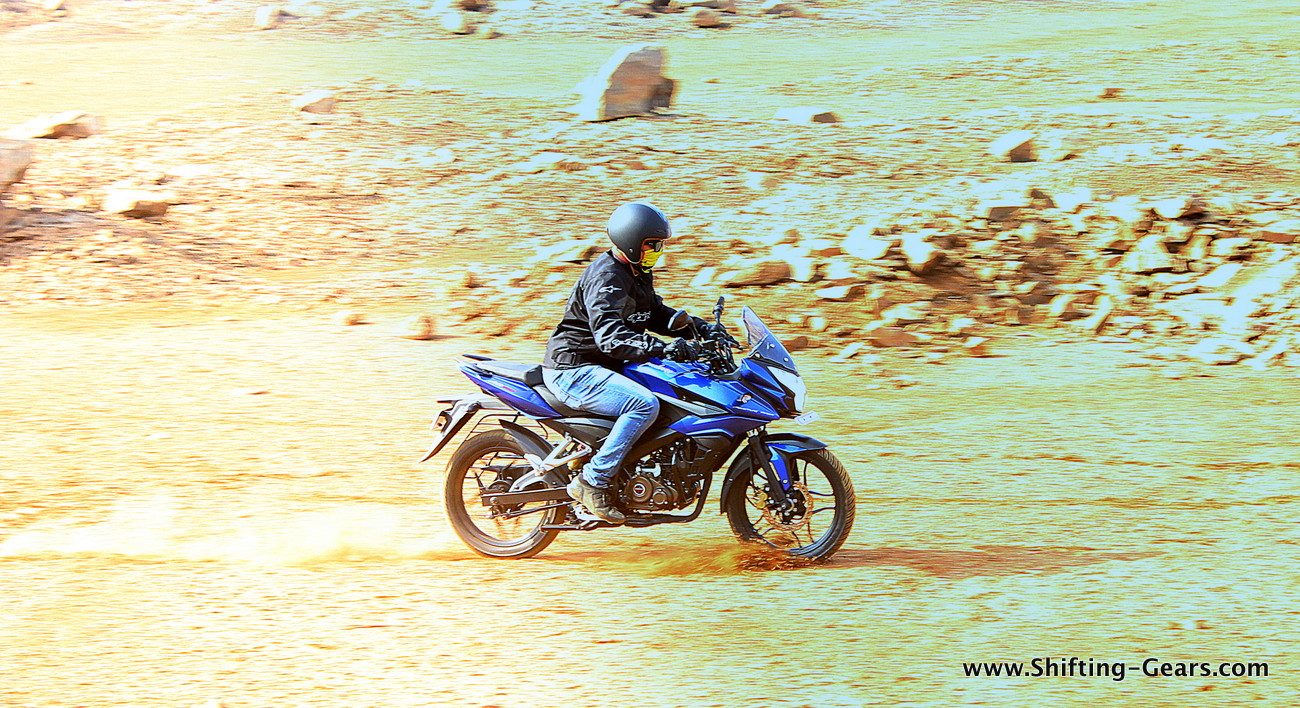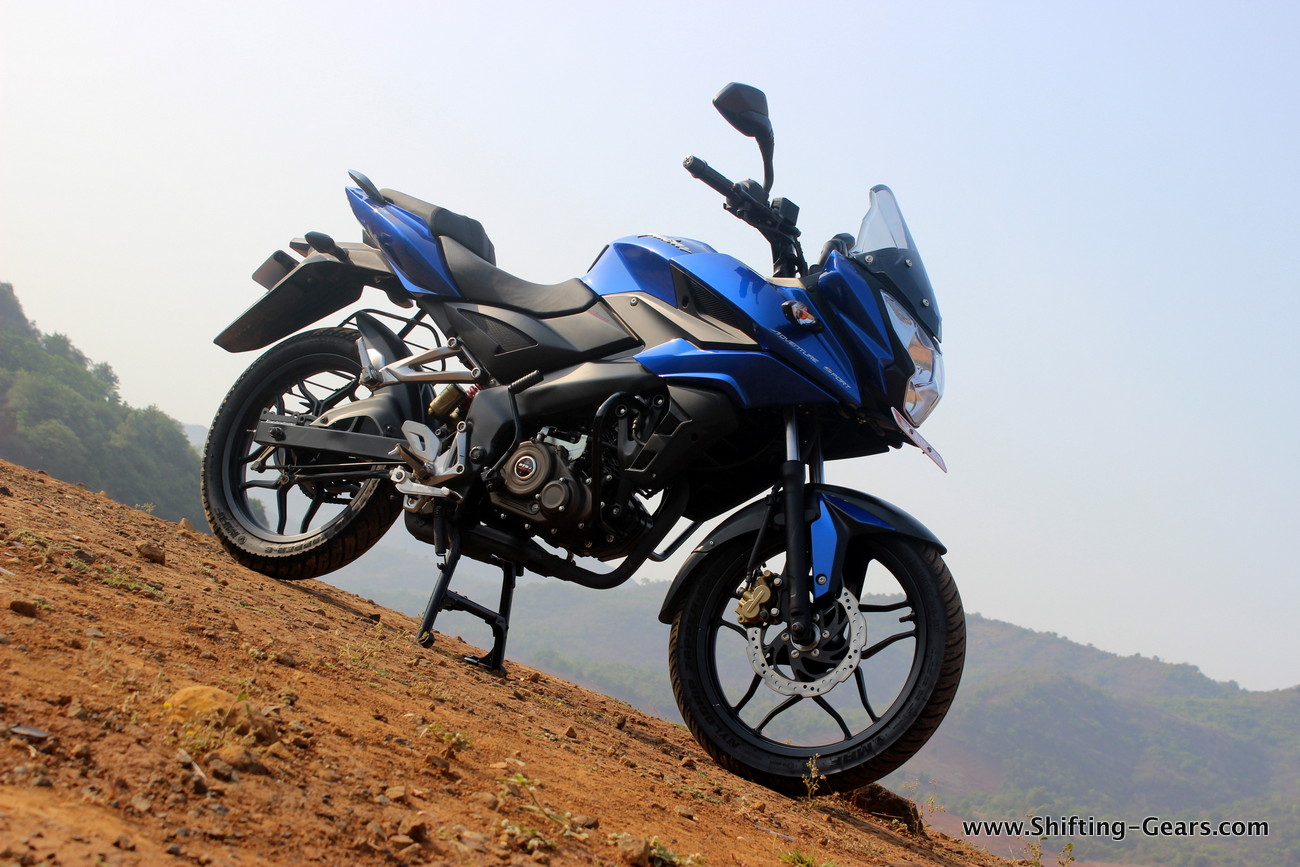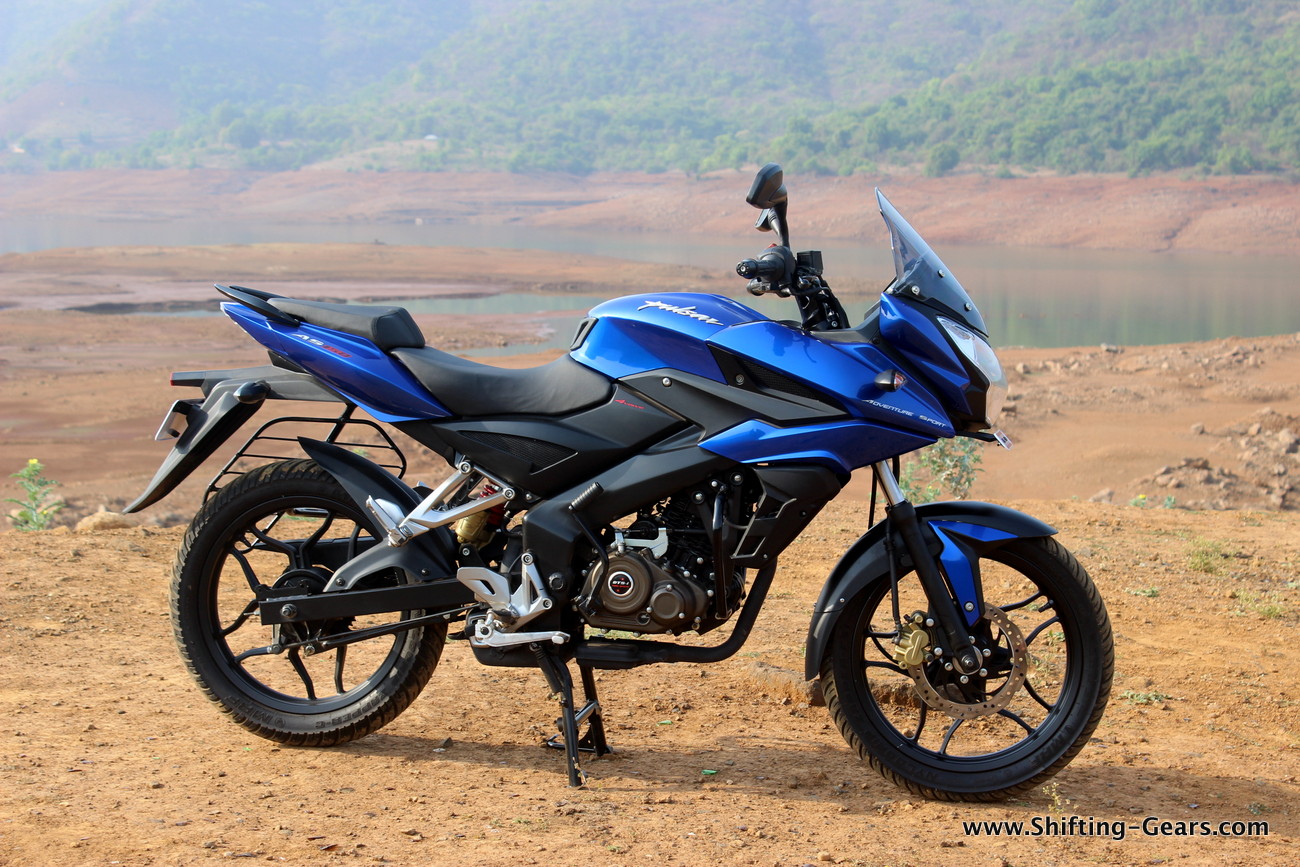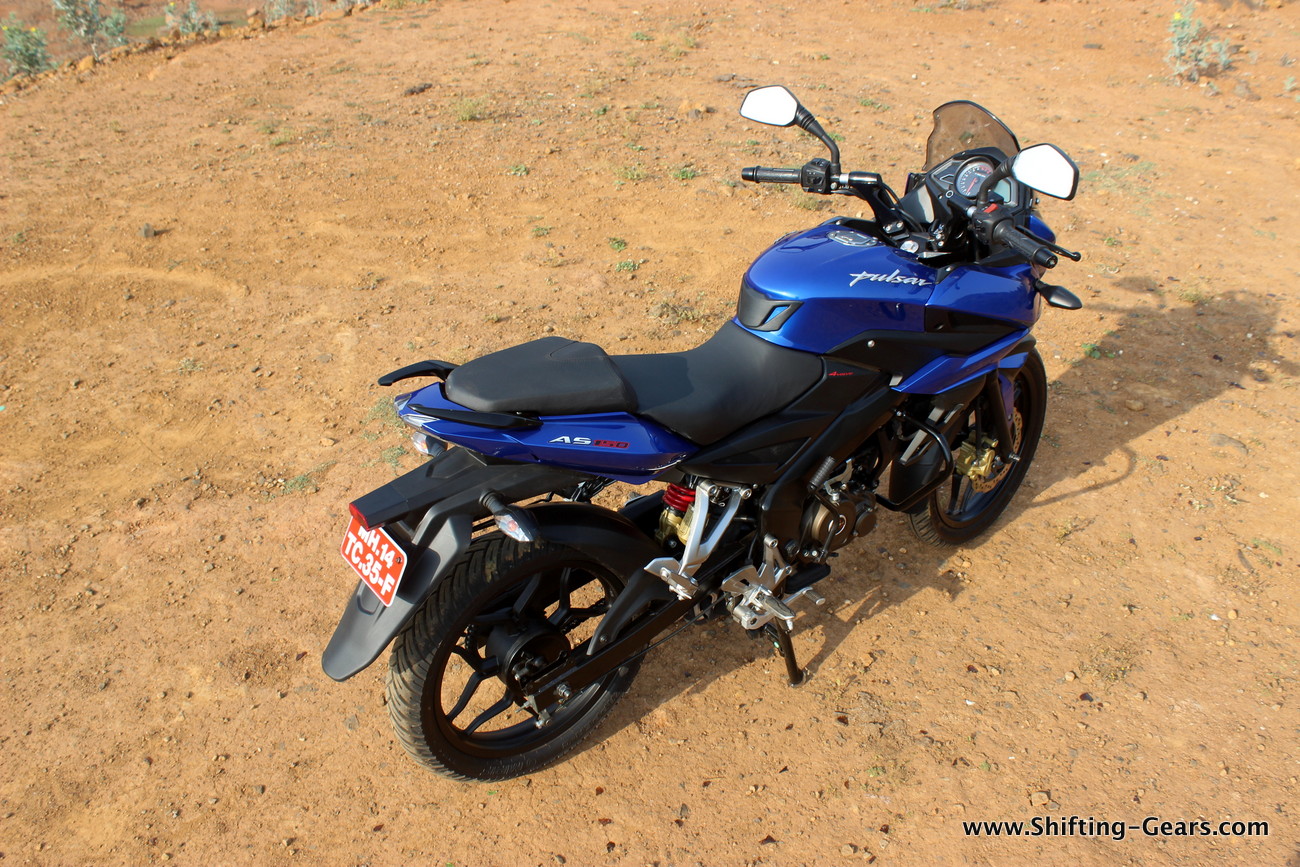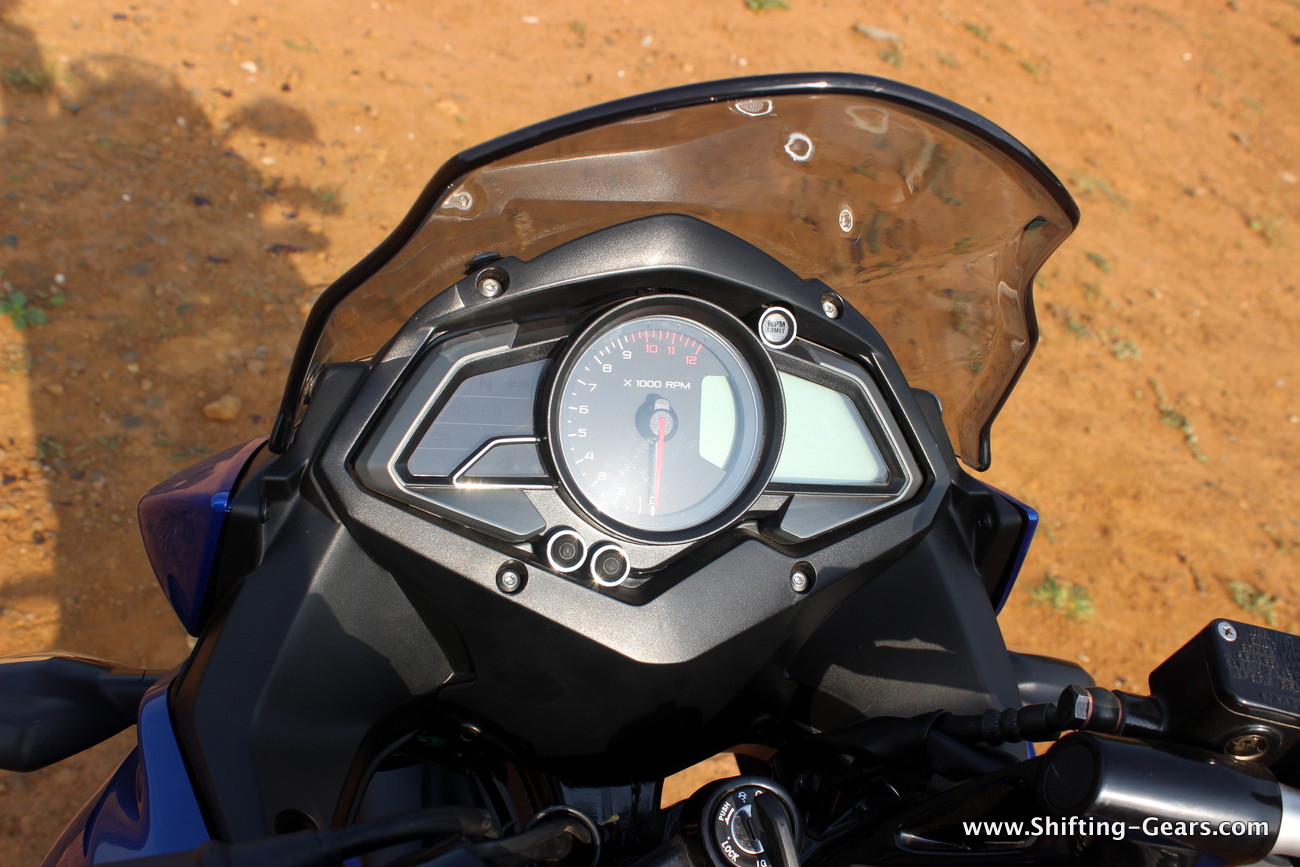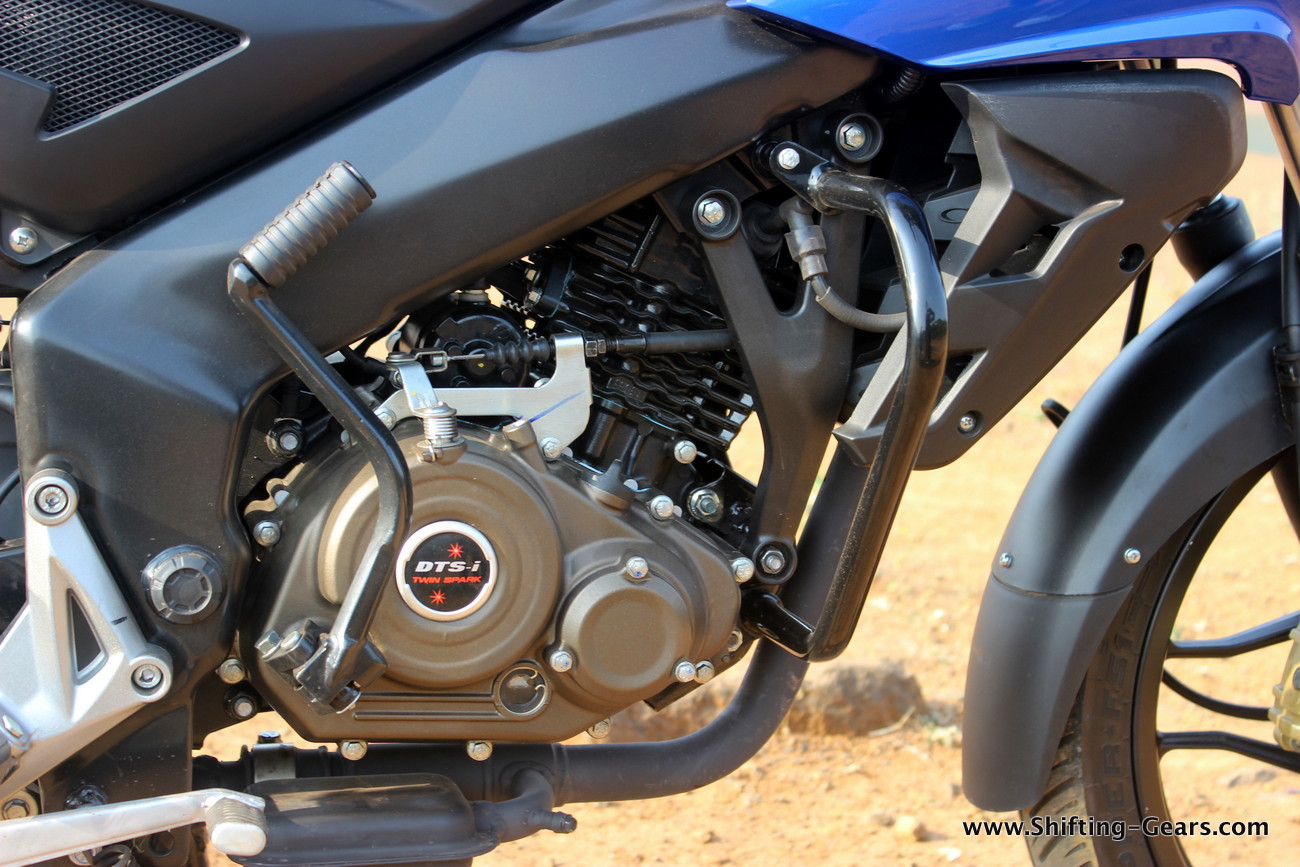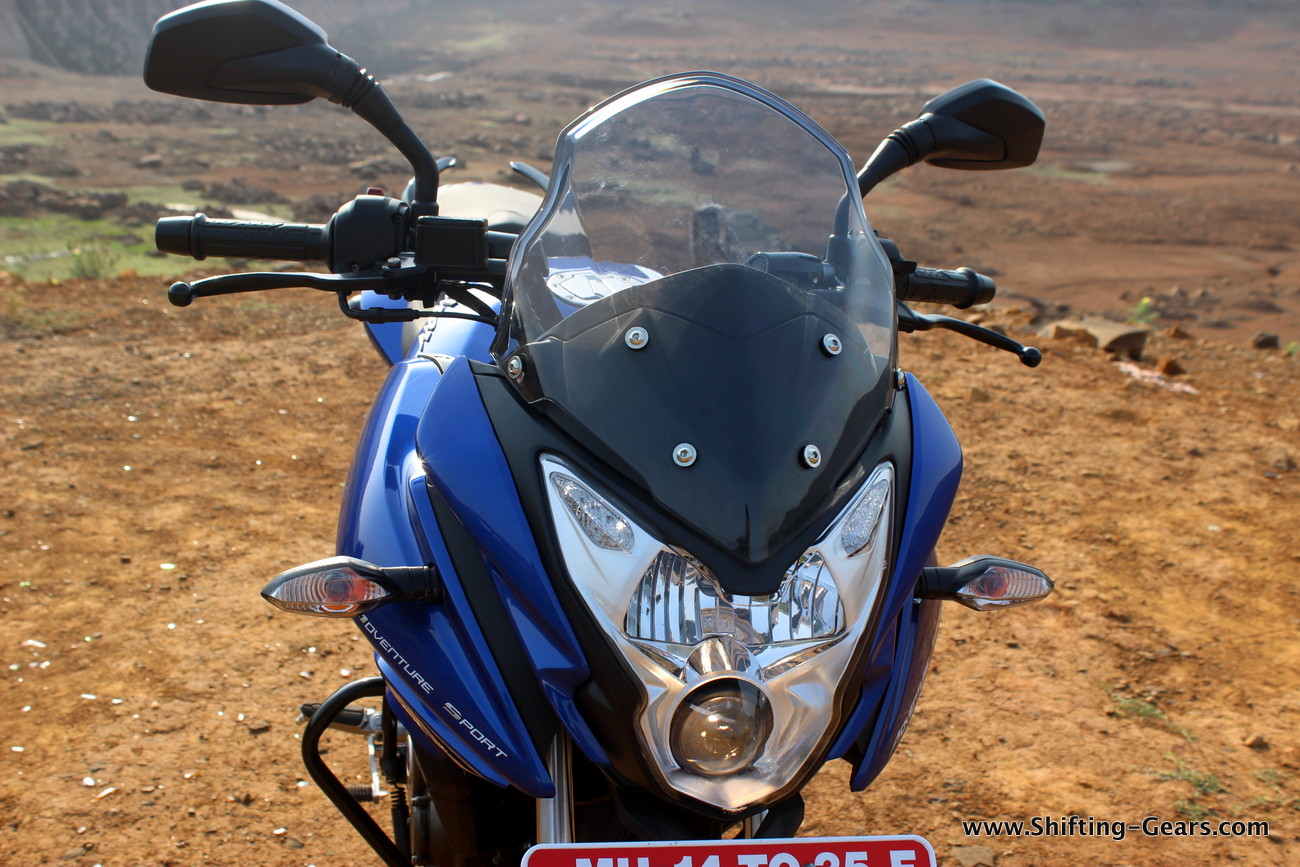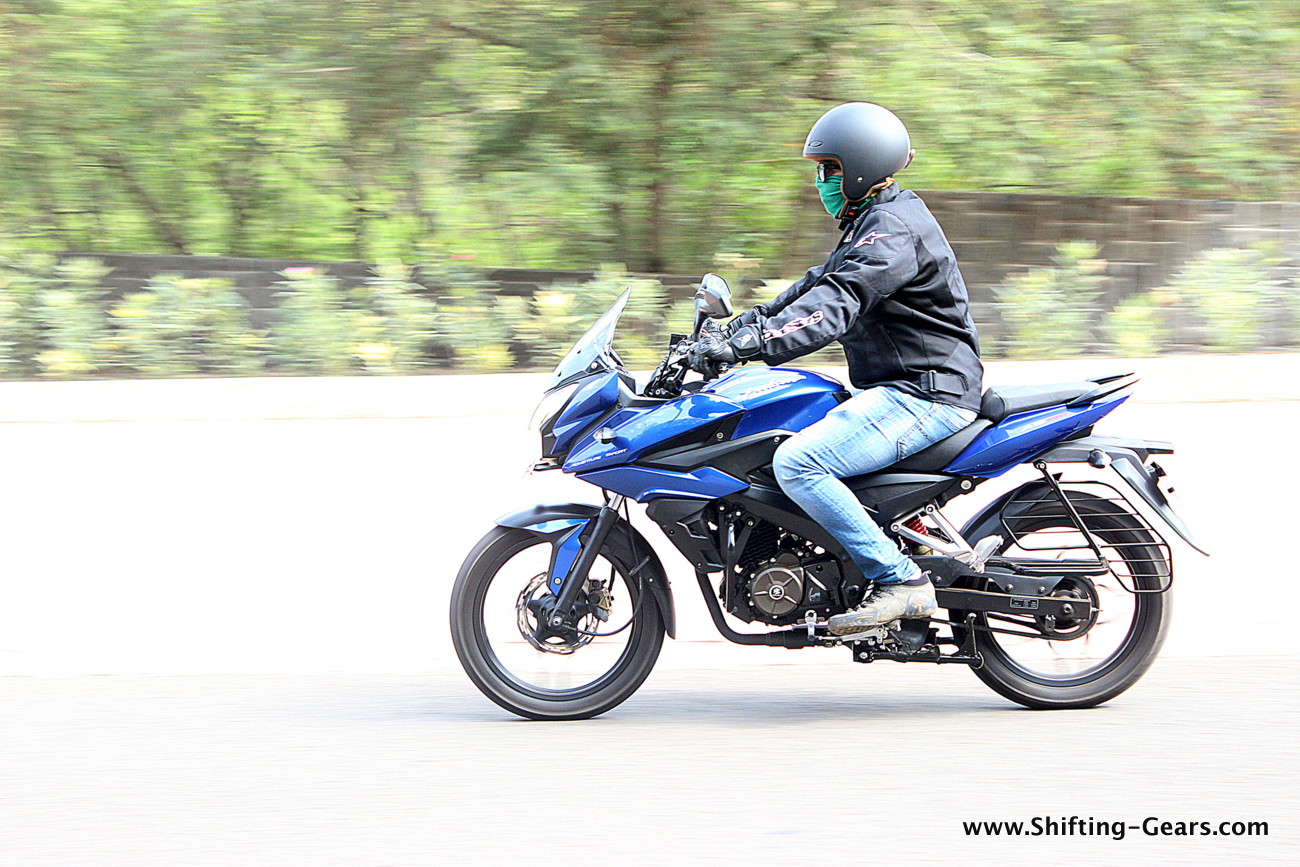No matter how good a swimmer one is, sometimes, he / she can get caught in the current. Same is the situation with Bajaj Auto in recent times. A title contender for the #1 two-wheeler manufacturer once upon a time, is now loosing market share to competitors month-on-month. To counter this, Bajaj takes up its not so effective & familiar strategy of launching multiple products under one brand name. However, this time Bajaj has now just tweaked the engine for a couple of cc more or less, but even given it a different body style. The new Adventure Sport series for the Pulsar brand although sounds very committed, is not really an adventure friendly motorcycle. Bajaj claims these are just adventure friendly posers built over normal road going machines and could possibly manage some mild off-roading.
The new Pulsar 150AS is an all-new product though. It is not built over the previous generation Pulsar which will soon be discontinued as a new 150NS model is on the cards. Although this 150cc motorcycle is all-new compared to the outgoing model, it shares plenty of parts with bigger siblings such as the Pulsar 200NS & AS200.
With launches happening back to back, customers however are confused. The Pulsar AS150 & AS200 were launched last month & the RS200 sportsbike was launched in March ’15. When we spoke to a few biking enthusiasts, they were unaware of the ‘AS’ brand. So… Is this strategy really working? Will a long line-up of Pulsar motorcycles generate the sales volume which Bajaj Auto desire? And is the new Pulsar 150AS a worthy contender in the sub 1 lakh rupee mark? Let’s find out…
Styling:
The Pulsar AS150 although a completely new body style in the 150cc segment, is still familiar in the biking segment. The ‘Adventure Sport’ series of Bajaj bikes sport a semi-fairing at the front and have the rest of the body similar to the Pulsar 200NS.
Look at the bike from the front, and it feels like it is an evolved & more edgy version of the Pulsar 220F with the semi-fairing. The Pulsar AS150 gets projector headlamps & a regular lens as well for high beam. On either corners, it also sports LED pilot lamps. A lot of matte silver finish has been used within the headlamp to give it a premium look. Surrounding the entire headlamp section is a thin black plastic to add some contrast. On top, you have a medium sized clear windscreen to enhance aero performance. This windscreen is nicely bolted and doesn’t feel like it will start rattling soon. Below, the Pulsar AS150 gets a dual tone mud guard in body colour + matte black. Alloy wheels are the same as seen on the 200NS and hold on to a 240mm petal disc brake. Telescopic front fork is painted in black.
When looked at sideways, the part sharing between the Pulsar range is clearly evident. Apart from the new semi-fairing at the front, everything is similar to the 200NS. The new front fairing is sharp and adds some noticeably bulk to the motorcycle. It is finished in body colour as well as black to break the monotony. An adventure Sport sticker is slapped below the turn indicators. Tank has been redesigned to accommodate & sync well with the new fairing. The usual, chunky Pulsar logo is slapped on the fuel tank. Fuel filler cap on top is also familiar territory, finished in silver. Bajaj offers a small tank protector in black, but it doesn’t really look good. A thoughtful addition nevertheless. Below, the engine case is painted in gold while other components are seen in black. There is no liquid-cooling on the AS150, hence no radiator. However, cowls below the tank are placed in a way which could lead someone to think there actually is a radiator beneath. These cowls however are used to deflect wind on the engine back, for effecting cooling. A small saree guard is also mounted below these floating cowls and is painted in black. On the LHS, you get a fuel flow regulator which shouts out that this is not a fuel-injected motorcycle. The perimeter frame painted in black is exposed a fair amount. While most components are painted in black, only the foot pegs & their respective mounts are seen in silver. Seats are of the split & step-up type, similar to the 200NS.
Coming to the rear, nothing is really new. The Pulsar AS150 sports the sample LED tail lamps split in two. The rear body panel also looks almost identical. Pillion gets a grab rail painted in black. Below, the black alloy wheels do not get disc brakes. There is a small tyre hugger towards the front, but the larger one at the rear has been given a miss. However, the swingarm is shared with the 200NS and hence, the mount to hold this tyre hugger is still seen, and it looks odd. Rear mud guard it an XL sized unit. This is unlike the short tail tidy on the 200NS. This has been done to avoid mud spray while touring for longer distances. Also, since the front is now bulky with the addition of a fairing, the rear would have looked incomplete or not in sync if it sported a short tail tidy section. On the LHS, the AS150 gets a conventional saree guard and a half chain cover. The bike also features an underbelly exhaust, which is becoming quite common in the Indian marketplace these days.
Overall, the Pulsar AS150 is a decent package priced at Rs. 79,000 ex-showroom Delhi. There is no motorcycle in this range which offers you as many features. But then, have people actually made note of this latest entrant from Bajaj Auto? Time will tell…
Instrumentation & ergonomics:
Speedometer is shared with the Pulsar 200NS and sports the same 3-pot layout. With tell tale lamps to the LHS, tachometer in the centre & a digital display to the RHS. Fuel gauge is displayed in digital, within the tachometer section. The other digital display reveals data such as speed, odometer, trip meter, service reminder & a clock. The gear-shift light is placed on top, and lights up in amber shade. The plastic panel around the speedometer cover the area neatly, and feel good. Things are bolted on real tight by Bajaj standards. The front windscreen is also not too sloping, to interfere with your vision when looking down at the speedo console. Keyhole is placed conventionally on the handlebar. The handlebars are clip-ons, and painted in black. They are raised for optimum touring comfort. Rear view mirrors are also mounted on the handlebar. Rear view mirror quality however felt a bit cheap, and they would probably loosen with time. Also, the rearward view from these mirrors was not up to the mark. Switchgear is familiar territory and gets blue illumination as well.
The Pulsar AS150 has a seat height of 807mm, which is rather tall by 150cc standards. However, it is easy to hop on & off the bike. Seating posture is upright, thanks to the raised handlebar. This will surely enhance long touring abilities without the rider feeling stressed. Also, the front windscreen does a decent job of deflecting the wind, to avoid stress due to windblast. Foot pegs are rear set, and offer the right mix of sporty yet comfortable.
For the pillion, things are the same as on the 200NS. Seat has decent room to accommodate even those on the slightly heavier side. Seat compound is medium, and should do a decent job of not leaving your saddle sore within minutes.
The AS150 is a good mix for riders of all age groups. The upright riding position will surely appeal to sedate and elderly riders while the rear set foot pegs offer a good sporty feel to attract the younger audience.
Engine, performance & handling:
Powering the Pulsar AS150 is an all-new 150cc engine. It is a 149.5cc, single-cylinder, air-cooled, triple-spark petrol motor producing 17 PS of power @ 9,500 RPM & 13 Nm of torque @ 7,000 RPM. Engine is matched to a 5-speed gearbox. Power to weight ratio is an impressive 118.9 PS / tonne. This new motor will soon make its way in the Pulsar 150NS as well with an even higher power to weight ratio. It is not revealed is this new motor for the Pulsar is a downsized version of the 200NS or an uprated version of the Discover 150. Whatever is the case, the Pulsar AS150 pumps out the best in class power figure of 17 PS. However, the torque generated is amongst the lowest.
One worthy mention, compared to the older Pulsar 150 is that the engine induction noise is now completely gone. So, if the new 150cc powered Pulsar is overtaking you, you cannot guess the bike just by the engine noise anymore. This was quite annoying with the older models. One could easily tell by the engine whine that a Pulsar was approaching.
Fire up the AS150 and the engine feels much, much refined compared to the older 150cc models. NVH levels are acceptable, but not as good as the Japanese rivals. Exhaust note – well, there’s nothing much to speak about it. We all know how these underbelly exhausts sound and the less we speak about them, the better. On idle, vibrations on the handlebar & foot pegs are well contained.
Slot it in first, and the bike pulls clean with little throttle input. The engine feels really smooth by Bajaj standards in the 150cc segment. The bike feels peppy and throttle response is crisp. Fuel is fed via CV carburettors. When riding in the city, the strong mid-range performance will really keep you happy. Power & torque availability lower down the revv range is acceptable, but one would need to downshift to make swift progress. Stay around the 6,000 RPM mark and the Pulsar AS150 delivers a smooth and punchy ride. With a ground clearance of 170mm, not only did the AS150 tackle speed breakers well, we even pushed in on unknown territory without scraping the bottom even once. This should definitely come in handy on broken Indian roads.
Out on the highway, the Pulsar AS150 demands a sedate riding style. Yes, power output being best in class, one would expect best in class top end performance as well. But thanks to the longer stroke, top end performance is slightly compromised. However, this results in the engine feeling smoother when closed to the redline. Power delivery is linear, however you feel the punch in the 6,000 – 9,000 RPM range. At speeds, one can easily crouch and deflect the wind over their helmet with the help of the front windscreen. Don’t expect the speedo to climb very fast though. Power tapers off once you climb over 120 kmph and progress beyond this is a bit slow.
Suspension setup on the AS150 is on the softer side, which delivers plush riding dynamics within the city. Bumps are soaked in well and there’s not too much of a jerk felt by the rider or pillion. This setup however turns out a little bouncy than expected on the highway. While riding enthusiastically, one needs to be cautious moving over undulated patches, as this could affect the balance. The bike makes use of a gar-charged rear monoshock & telescopic front fork. Although the bike sports the ‘Adventure’ tag, the suspension travel is not longer to be thrown around on rocky terrain.
MRF tyres provide decent grip, and we are glad there are no Eurogrip tyres used. Tyre profile is slim, but then, is at par with the segment. Braking performance is adequate and the front disc offers good bite. Rear drum functions well, however, a rear disc brake could have rounded off the motorcycle better.
So if you’re in the market for a new 150cc motorcycle and want some road presence, the Pulsar AS150 will deliver the most on these parameters. The bike is now much more refined compared to older Pulsars in the segment, and surely worthy of a test-ride if not buying instantly. At the given price, it offers the most value for money. If you own the older 150cc Pulsar, we strongly recommend giving this new motor a shot, and you will be surprised to believe how much Bajaj Auto has worked on refining things. If an affordable tourer is what you need, the Pulsar AS150 offers a relaxed riding position and is even relaxing on your budget.

